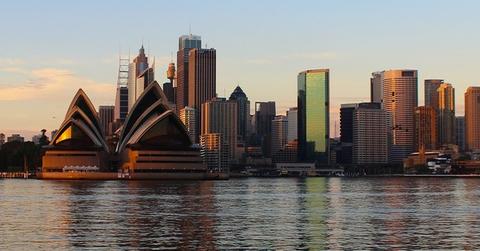Australia Sets Goal For 2025 To Implement Sustainable Packaging Everywhere In The Country
Faced with a serious back-up of recycling waste in the country, Australia is being forced to confront their issues around production with new plans. But some think they need to be a lot more ambitious.
Updated May 17 2019, 2:23 p.m. ET
Australia has been struggling with a recycling issue. The country has been shipping 35 percent of their recyclable plastics and 30 percent of their paper and cardboard to China, but China has recently tightened up their limits on how "contaminated" those shipments can be. Because of improper recycling procedures, a certain amount of most people's recycling waste can't actually be processed.
Ipswich Mayor Andrew Antoniolli was met with local resistance over a plan to just put all recycling contents directly into a landfill. Ultimately, they decided that the local Council needed to push education on the matter, so people understand what happens when they don't sort properly.
"The cost is not the issue — the issue is contamination," he said. "If we can't meet a certain level of contamination, they [China] won't accept it — it'll go to landfill. At present there are quite simply too many pizza boxes, plastic bags, burger wrappers and other items not fit for recycling."
Now, the Guardian reports that Australia's government is taking a huge step, and setting 2025 as their goal for making all packaging produced in the country "reusable, compostable or recyclable." The Malcolm Turnbull administration is also promising to ensure the use of more recycled materials when it comes to government projects like building roads, and to generally improve recycling capacity.
The decision was made by several federal and state environment ministers on Friday in Melbourne. Josh Frydenberg, the federal environment minister, pushed the urgency of the issue, saying, “This is an important step forward and will have a real positive impact on our environment.”
However, for some, 2025 is still too far off.
The Australian Council of Recycling, and the Australian Local Government Association, think deeper intervention should be taken. When producing a material, the question shouldn't be if it's capable of being recycled, but if it actually will be. David O’Loughlin, president of the Australian Local Government Association, gave polystyrene as an example. It can technically be recycled, but it's not profitable to do so, and he fears that will mean it will still be made under the new goal, but never make it to the recycling part.
Currently, the local government is stockpiling recycling collected from private homes, waiting to see where the material will go if it can't be shipped to China. The urgency of the situation is pushing leaders to discuss what changes must be made, but even the chief executive of the Australian Council of Recycling, Peter Shmigel, agrees that the country needs to be more ambitious than 2025 for change.
“They’ve acknowledged these themes but need to move more quickly,” said Shmigel. “It is happening in Europe. Why is Australia the poor cousin?”
It's feared that these meetings give the impression more is being done to deal with the issue than actually is, but there will be a second teleconference on the issue in June between the ministers. A few more months of no recycling plan in place may be the push they need to bring that 2025 goal closer.
